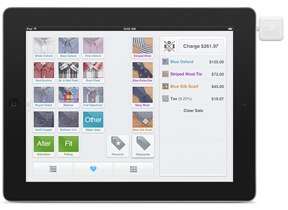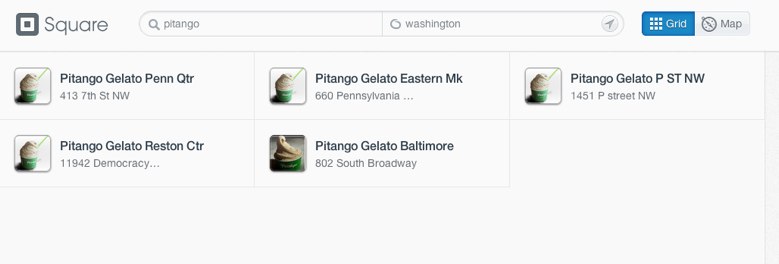With the Starbucks deal in place, there’s no doubt that Square will continue to eye partnerships with large brick-and-mortar stores and brands to power mobile payments and loyalty. But there’s a point to be made that the major opportunity may not be with the large brands like Starbucks but with the multitude of small to medium sized chains across the U.S. and beyond. These are regional stores that have two or more locations, but aren’t as big as the larger national chains. If Square were to capture marketshare for these regional stores, the company would be able to complete the entire tail of merchants, from the local taco truck to the small chain of wine stores to the Starbucks. Interestingly, we’re told that updates to the company’s iPad-powered register, Square Register, earlier this year has brought more and more small chains to the payments platform.
As we reported in March, Square Register was reconfigured to support merchants of all types. Some of the more high-powered features included the ability to customize permissions for employees on the register, access to sales reports, and the ability to wirelessly print receipts or open a cash drawer to make change. Analytics allow merchants to segment consumer payments data and transactions, and users can access data around number of payments, subtotals, tax, tips, refunds, account deposits, etc.
Noah Dan, the founder and CEO of a number of Italian ice cream stores called Pitango Gelato in the Washington D.C. area, says Square Register works “better than any other solution on the market.” He explains that the simplicity in which Square has combined both the register functions as well as the financial transactional data is “nothing short of a genius approach.”
Dan says that because he has multiple locations (five stores); he needed a simple way for all of his employees to access and use a single point of sale system. He said that Square’s register was much more simple to use than the other systems he looked at and he didn’t feel that he was sacrificing any features by going with Square. With multiple stores, he can access all of his sales data in a single interface, and the systems were easy to implement across his shops. He was able to onboard all five of his stores within a week. He adds that the price point (the 2.75 percent per swipe fee) was attractive, as well.
Jeremy Veatch, the founder of Cartel Coffee Lab, a local coffee house in Phoenix and Tucson with five locations, initially started using Square when he had one store. Veatch highlights the ease of onboarding when he did expand as one of the reasons why he stuck with Square instead of moving to a different point-of-sale system. Similar to Dan’s perspective, the simplicity of the register and the ability to export sales data into Excel files is a key function that he uses across his locations.
He explains that he likes the ability to see how each store is performing from a single app, and he doesn’t actually have to go into each store. He can also update menus on the fly, as well as add or remove items from certain locations from his iPad app.
Item management for chains is actually a very important feature. Many chains have slightly varied menus, or run out of items at different paces. If you have multiple locations running Square, with each of them listed in the Square directory, each can list different items on their menu. For now, when you search on Square’s online Directory for these stores, you’ll see each location listed separately.
Veatch and Dan aren’t the only smaller chains using Square. Cafe Grumpy in New York City now uses Square Register across its four locations. Amy’s Ice Cream in Austin has 13 locations using the point-of-sale offering. Three Twins in Napa has two locations running Square.
There are still features that Square could roll out to make things even more simple for these smaller- to medium-sized chains. For example, Veatch says that in order for him to access his five stores’ data, he has to log in separately in the Register app’s separate access points with five different passwords. The ability to access all the locations with one password/username would be ideal, he says.
While the Starbucks deal is no doubt a huge win for Square from a branding and exposure perspective, these smaller chains could represent a huge opportunity for Square to command a meaningful part of payments for the regional merchant. This is why we’re seeing PayPal develop custom payments integrations for mid-size, regional retailers, as well.
With credit cards, as with many of these point-of-sale offerings, the register of choice will come down to function and feature. Whoever is able to pick up the most of these retailers is going to be the payments company that provides the most easy to use, yet powerful, offering that is tailored to the needs of chains. It’s unclear yet who that will be, but it looks like Square is off to a good start.

